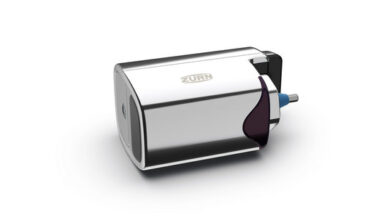3 New AI-Enabled Predictive Maintenance Trends that Empower Technicians
By Trent Swanson

Since the 2010s, artificial intelligence has been put to work in a growing number of built spaces,
including offices, hospitals and schools – and its use continues to grow. In HVAC, AI is often leveraged
for the following:
- Improve system energy use, resulting in cost savings and lower emissions
- Increase equipment longevity and reliability, reducing downtime and total cost of ownership
- Optimize maintenance practices, reducing maintenance costs and streamlining service
In the third application, optimizing maintenance practices, AI can predict when equipment might break
down. This allows technicians to address potential issues in early stages and gather valuable information
that can speed up service and minimize downtime.
As AI continues to advance and gain popularity, it will be used in even more ways within HVAC systems.
The following are three of the latest, HVAC-specific AI maintenance trends that technicians can use to
troubleshoot and service equipment more quickly, efficiently and accurately.
1. Generative AI and copilots for troubleshooting
While troubleshooting an issue or performing maintenance, HVAC techs often ask other technicians or
refer to service manuals if they have questions. However, as experienced techs retire and take their
knowledge with them, there are fewer resources to contact, and newer techs may not know where to
look for immediate answers. As a result, technicians have started to turn to generative AI platform
assistants, also known as copilots, for help when troubleshooting, servicing equipment, collecting
information and reporting.
Generative AI copilots are deep neural nets that can take in documentation like service manuals and
provide answers to very specific questions. Technicians may even be able to take a picture of the
equipment plate copilots can use to quickly extract data, such as the model number to provide
information very quickly and easily. Instead of paging through documentation or calling someone to find
an answer, copilots make it possible for technicians to easily interact with documentation and
knowledge base articles through a natural language interface, getting to the necessary information very
quickly.
These copilots can help empower technicians to troubleshoot and repair equipment more efficiently and
more accurately while restoring the system functions more quickly. As the technology continues to
develop, the use of video- and audio-enabled tools, along with multimodal AI algorithms will grow,
allowing technicians to access equipment information and make repairs and service recommendations
even more efficiently.
2. The instrumentation of equipment through addition of more sensors and sensor fusion
AI technology can help technicians predict HVAC system failures and maintenance needs through
algorithms that leverage system history and sensor data. More and more sensors are being added to
HVAC equipment. This creates multiple data streams that often relate to and inform one another.
By combining data streams from multiple sensors, sensor fusion makes it possible to create a more
accurate representation of an environment or piece of equipment and increase certainty when
technicians detect an issue.
HVAC sensor data can include critical system information, including temperature, pressure, vibration,
energy, airflow, refrigerant level and component wear. This data is analyzed using a combination of
analytics and AI algorithms. The algorithms identify deviations from normal operating patterns that
could be early indicators of a failure. Technicians can use these data anomalies to assess component
wear or inefficient operation.
By increasing the number of sensors, algorithms can receive more data and enable more accurate
outcomes. The fusion of these sensors can provide additional datapoints and increase data quality.
3. Equipment shipped from the factory with robust and secure connectivity out of the box
Increasingly, equipment from leading manufacturers is being shipped from the factory with secure
connectivity – a state where the unit is said to “arrive alive.” Connectivity makes data available for
advanced analytics and AI, while cybersecurity helps ensure equipment and data is not compromised.
Through analytics and AI, technicians and building owners receive notifications and remote diagnostics
from the equipment itself, enabling them to provide proactive maintenance. Proactive maintenance
minimizes equipment downtime for a building owner and can reduce emergency service calls for
technicians.
If a service technician receives a notification that a worn component requires service, the technician can
secure a new component and schedule the service. This can help reduce equipment failure and
unplanned downtime while also minimizing service trips.
AI readiness for AI success
In the next five years, AI’s role in the built environment, including HVAC, will continue to expand and
transform. As the value of AI becomes clearer and AI itself becomes more accessible, it is expected that
the technology will see broader adoption across more applications. The ability of AI to predict problems
and anticipate service needs will become more advanced, leading to less downtime and longer
equipment life, as well as streamlining maintenance and service routines overall.
Since it’s a relatively new field, AI technology can feel complex and risky. But as the adoption of AI
continues to grow, it’s increasingly important that technicians gain a fundamental understanding of AI,
its capabilities and the applications for which it’s best used. AI readiness is the key to AI success.
Trent Swanson is vice president of architecture, platform & artificial intelligence at Johnson Controls.
Image by macrovector on Freepik



